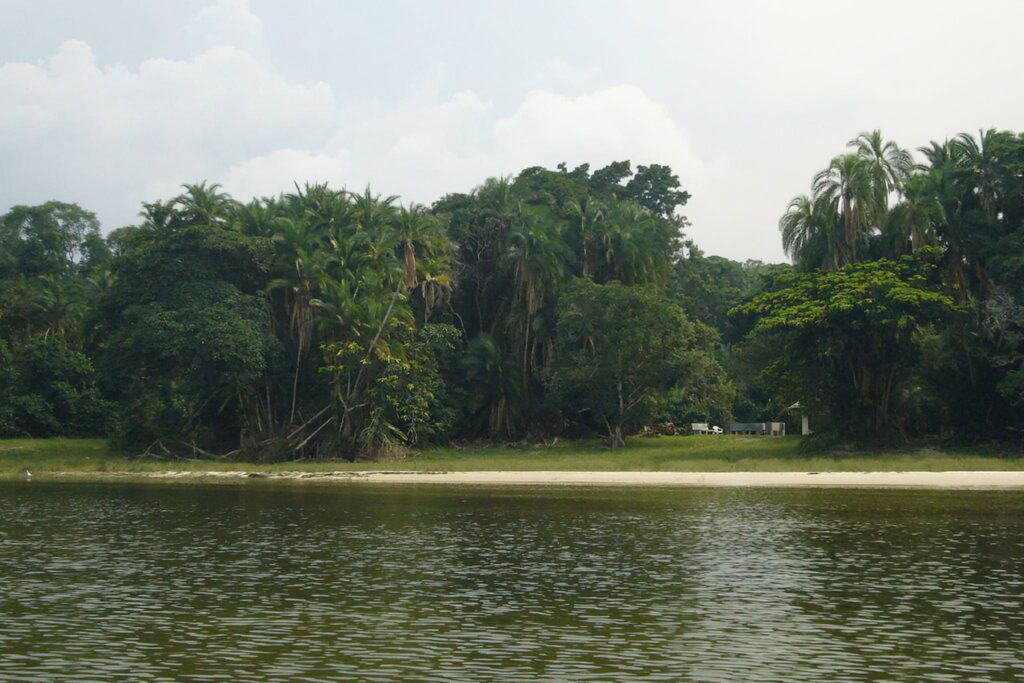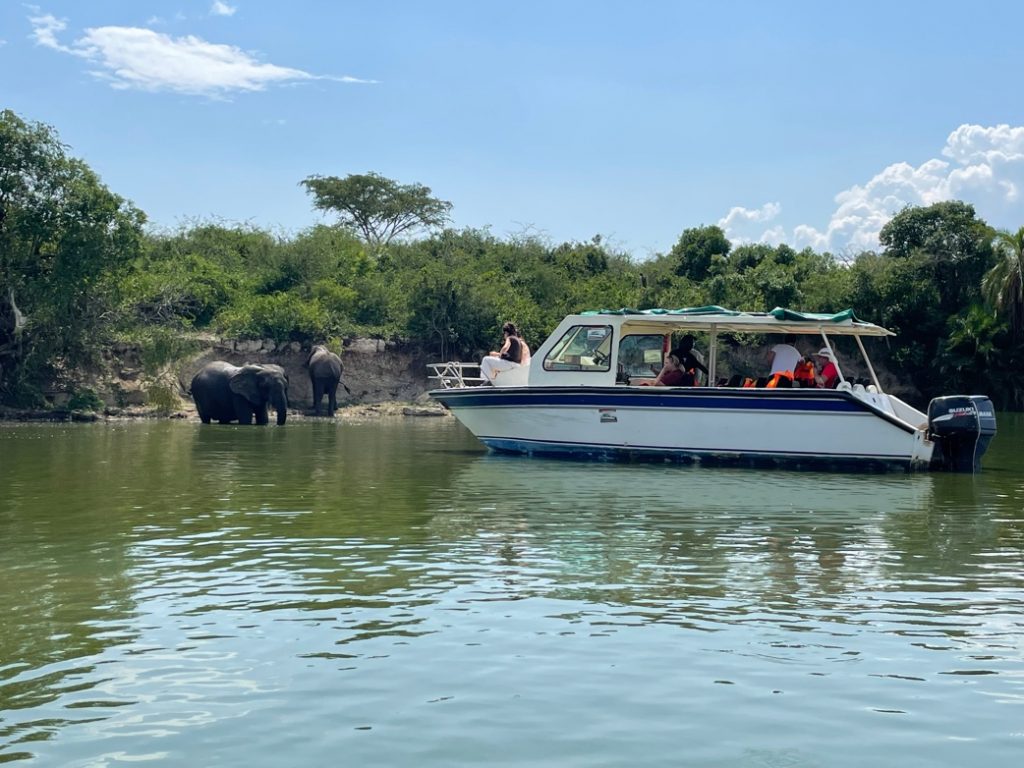The Masai warriors
What comes into your mind when you read or someone tells you about the “modern African tribes"? The marvelous Pictures and videos of the dark tall slender men and women in the red plaids bouncing high into the air. Maasai women dressed up in colorful beads from head to toe, singing loud ritual songs with repetitive verses. Dyed hair, bracelets, anklets, crouched huts, a lonesome shepherd tending his skinny humped cows amidst the savannah – these are the images that should come into your mind when describing the true African culture and being represented by one of the famous indigenous tribes, the Maasai. The well-known tribe of nomads and warriors who steadfastly refuse the temptations of civilization and have lived their ancestors' way of life up to this day.
Through the eyes of a newcomer tourist
Once you land in Tanzania, you might be able to see local guys and young ladies, wowly dressed and welcoming almost all travelers. Given a chance to visit deeply in areas of Arusha and Zanzibar you can see people in traditional attires - red and blue plaids, with their arms and necks bead-covered. Treat them well and always be willing to pause for a photo if you can give a tip for it. There’re quite a several souvenir shops and other knick-knacks, Finding the distinctive colorful scarves and plaids known as “shuka” isn’t a challenge for whoever needs it since there’s high demand among tourists and the fact that local hawkers know better hat tourists love. the remote inner lands of Tanzania and Kenya are the world where-famous aliens from the old African world reside - the Maasai.


Tanzania and Kenya’s Indigenous Maasai People
Known for their deep respect for nature, nomadic lifestyle, and red robes, the Maasai are perhaps Kenya's best-known tribe. "Maasai" literally means "one who speaks the Maa language.” This ancient language is currently used by at least half a dozen ethnic groups, constituting the sub-tribes of the Maasai people. It results in a wide range of sub-dialects changing from one Maasai settlement to another. However, many of the Maasai have had a command of English and Swahili ever since English and Swahili were introduced by the colonialists and Arabs. The closer settlements are near Maasai Mara which includes part of the Great Rift Valley in Kenya and Tanzania spreading from the Serengeti to Kilimanjaro areas and tourist areas. The Maasai is widely spread with about 3,000 tribes in modern Africa and They are not among the so-called uncontacted peoples who outright deny contact with the outside world. However, the modern Maasai do live isolated from their neighbors, speak their language, abiding by their tribal traditions, moving around freely with no passports in areas they consider their own.
- Modern Maasai Life
- Maasai warriors performing the Amudu dance
- THE COOLANT/A TYPICAL MAASAI HOUSE
- KRAAL – A TYPICAL MAASAI VILLAGE
Despite their long-standing intense image and observance of warrior customs, today’s Maasai is a fairly peaceful people. Although all men at some point become Morans (warriors) and proudly brush aside their daily work, it is more of a nod to tradition the Masai carry weapons like swords and sharp knives, though no one to fight or challenge. What we should realize about these present-day savannah dwellers – they continue to remain herdsmen. A modern Maasai settlement can remain in one location for a lot of time if there’s enough fodder for the cows, sheep, and goats. Lots of families simply follow a seasonal schedule as they guard and protect their pastures to return for the next season. They can as well tend to disappear as soon as someone dies there and the Elders tell them to drift somewhere else.
The ritual dance is performed the whole day long. Today, it has become a hallmark of not only the Maasai tribe but of entire Africa. It’s no surprise that the jumping dance is an obligatory performance before the tourists, especially when the cameras turn on. Everybody benefits from the popularity of the dance, and thus the Amudu can often be seen performed by other African peoples.
The Maasai huts provide reliable shelter from heat, rain, and wind. During hot days, the dung mixture very fast dries out and cracks. It’s a cooperation system where the huts will be smeared with dung again and this usually works for women and children.
A typical African stake wall is placed around the Maasai settlement, made up of thorny acacia branches at least a meter and a half high. As a rule, there’s only one entry and exit for livestock and people. And Such Maasai settlements are called bomas or kraals. This is done intentionally because it’s much easier for the Maasai to shift when the right time comes to move to new areas with greener pastures and water for livestock. This would only require dismantling all the poles and carrying them to the new location. This is a tradition of protecting animals from predators and fewer cases of extermination and ravage are reported the animal hides and skins were used in the construction of the bomas and it is still practiced these days where you can spot a very unique building. It’s to note that young boys at 3 armed and call for elders for intruders and at the age of 8-10, they are super warriors.
Maasai Routine
The tribe's only concern is livestock. No poultry, it's only sheep, cows, and goats. Farming is considered an unworthy occupation for these proud and free people of Maasai. The larger the herd the higher social status you gain and having cows is the true meaning of life. It’s the boys that look after cattle at a young age without elders and Milking, all housework, tirelessly repairing the huts cooking, fetching water, and many others is a woman’s task, it is also a role of a woman to satisfy a man in bed. The communal social system assumes that most families are united by blood and each clan member is to respect and partake in the common chores.
Maasai men kindling a fire
The Maasai believed that they have the right to own any cattle or goat on this earth and these esteemed Young men stealing cattle from other clans were always looked at as usual. All other crimes are punished by a fine, whatever the offense is, and cows were the best penalty.
Beaded Ornaments
Beadwork is favorite among many Africans, but the multi-skilled Maasai artisans seem to have outdone everyone in their impulse to stand out and become the most visible tribe on the African continent Obligatory attributes of any self-respecting Maasai are the Bracelets, necklaces, and ornaments for head and ears made of multicolored beads. Focused travelers must notice that the Maasai are always designed and with clean faces. Both sexes often decorate their ears and heads, wearing bracelets on their wrists and shins. In their free time, the Maasai women will make beaded ornaments for sale and wear. It's the role of each wife to make the man look smarter.
- PAINFUL CIRCUMCISION
- The Masai Food
- The Famous Jumping Dance
- KRAAL – A TYPICAL MAASAI VILLAGE
Emorata is an initiation ritual that all adolescents must go through of becoming adults in order to prepare for marriage and childbearing. Whoever dodges this ceremony is less considered in the community and looked at as a curse and unable to give bear children. When such people die, their bodies are not returned to the Savannah areas but are buried in the ground in disgrace. At the age of about 12 or 14, the warriors must go under circumcision, this is the worst time in their lifetime, it’s so painful and takes a long to heal, the screams, crying and danger of infections are among the risks but healing is successful. genital mutilation is significantly more difficult in women, at 14, or even earlier, the girls’ heads and eyebrows are shaved clean. An experienced woman then takes a blade and cuts off a part of a young girl’s genitalia as the girl as this results in untold pain. It’s never good because these girls face a lot of challenges and are prone to diseases and might fail to give birth, however, there’s much sensitization against this.
Traditionally Milk and meat are the core of the Maasai diet. Goats and beef are the first choices for meat because it is almost a crime to slaughter cows for food. since it’s their gold. Some stories are true others are false, the Maasai have tasted fruits and vegetables mostly the young age who shift to different homes and need to live. It’s Recent, that proud Africans have also tasted foods that are not typical of their traditions. Such as cornmeal, which they buy and add to milk to make porridge. Potatoes, Rice, cabbage, and other agricultural products.
You may wonder why the Maasai don’t like or support farming. The Maasai culture criticizes farming, which is examined as a crime against nature. Sheep fat, honey to make mead, selected tree barks, and roots can be chewed for a long time and these are considered supplements.
Here is another one of the seemingly strange Maasai traditions: the women are not allowed to cook food for men, never be present when it is cooked, not even looking at it. In case this happens, food is regarded as defiled and will be thrown away. But this does not apply in all clans and is not practiced every day, it’s believed to be done by the shifting warriors to new places. When you talk to an original Maasai will tell you how modern technology can never affect their tradition and changing how they believe will require more than 1000 years as they are so passionate about what it is.
The dance is called the Amudu. Performed by the young warriors-to-be preparing to undergo the initiation rite. Putting on garments without restricting their movements, forming circles, and jumping as high as they can. Incredibly lifting their feet so high from the ground and landing on tiptoe without touching the ground with their heels. It’s a continuous rhythmic succession, where the young tall boys would show how skilled they are and would only take the best-trained warrior jumping higher than the others. This skill was probably crucial in times of uncontrolled wilderness. trees were very few on the vast plains that one could climb, so it was only jumping on the spot that would give information about what was happening around, paying a closer look at predators if they were approaching the herd, or maybe if the other warriors from hostile tribes were organizing an ambush.
A typical African stake wall is placed around the Maasai settlement, made up of thorny acacia branches at least a meter and a half high. As a rule, there’s only one entry and exit for livestock and people. And Such Maasai settlements are called bomas or kraals. This is done intentionally because it’s much easier for the Maasai to shift when the right time comes to move to new areas with greener pastures and water for livestock. This would only require dismantling all the poles and carrying them to the new location. This is a tradition of protecting animals from predators and fewer cases of extermination and ravage are reported the animal hides and skins were used in the construction of the bomas and it is still practiced these days where you can spot a very unique building. It’s to note that young boys at 3 armed and call for elders for intruders and at the age of 8-10, they are super warriors.
The Maasai Hierarchy
The Morans or the warriors, take time to be exempted from a separated home, Maasai are polygamous, and men are prone to marrying 3-10 wives depending on the number of cows owned, a large number of cows the number of wives one can have. This gives a chance to rich men to marry even thirty wives. girls are soon given in for marriage and the fathers offered cows. By tradition and as a rule, young ladies must be married to men older than them.
- A Maasai woman with a child
- Maasai warriors wearing traditional shukas
In some Maasai clans, a woman may also have several husbands and this implies in the Maasai sexual traditions that allow men to offer their marital bed to peers of equal status. But if a woman gives conceives from such a casual union, her husband is considered to be the father.
At the age of 30-35 men go through more rituals that increase their status and are looked at as junior elders. And they are allowed to leave home and go to other areas to start a new life, On a few occasions they stay around and this means the juniors will face the orders since the elders are idle. Uniqueness is key the men have long braided hair which is still shaved off at 30-35 years of age.
The villages had chiefdoms and whenever one was needed, the young age would have the chance, the elders were to obtain community morale, and deal in other areas like marriage and migrations. The Maasai people know their place in the social hierarchy throughout their life and follow the rules; this is practiced from a young age as it helps the people to maintain their indigenous way of life that distinguishes them from all other tribal communities. The strict Maasai laws and the unquestioning obedience of elders, and the commitment to a nomadic way of life, allow the Maasai to live in their own way while other people have been seriously influenced by civilization.
This is a traditional Tanzanian fishermen’s attire that the Maasai found to their liking. Naturally, the dwellers of remote poor villages are unable to afford attractive shukas, so the hides will still do a great job. Due to long distances and living almost in the wild, the areas are always full of acacia and dry Savannah; the sharp dwellers developed noteworthy feature clothing for the footwear. The herdsmen wear sandals self-made from old automobile tires. A practical and unique solution, you bet!






